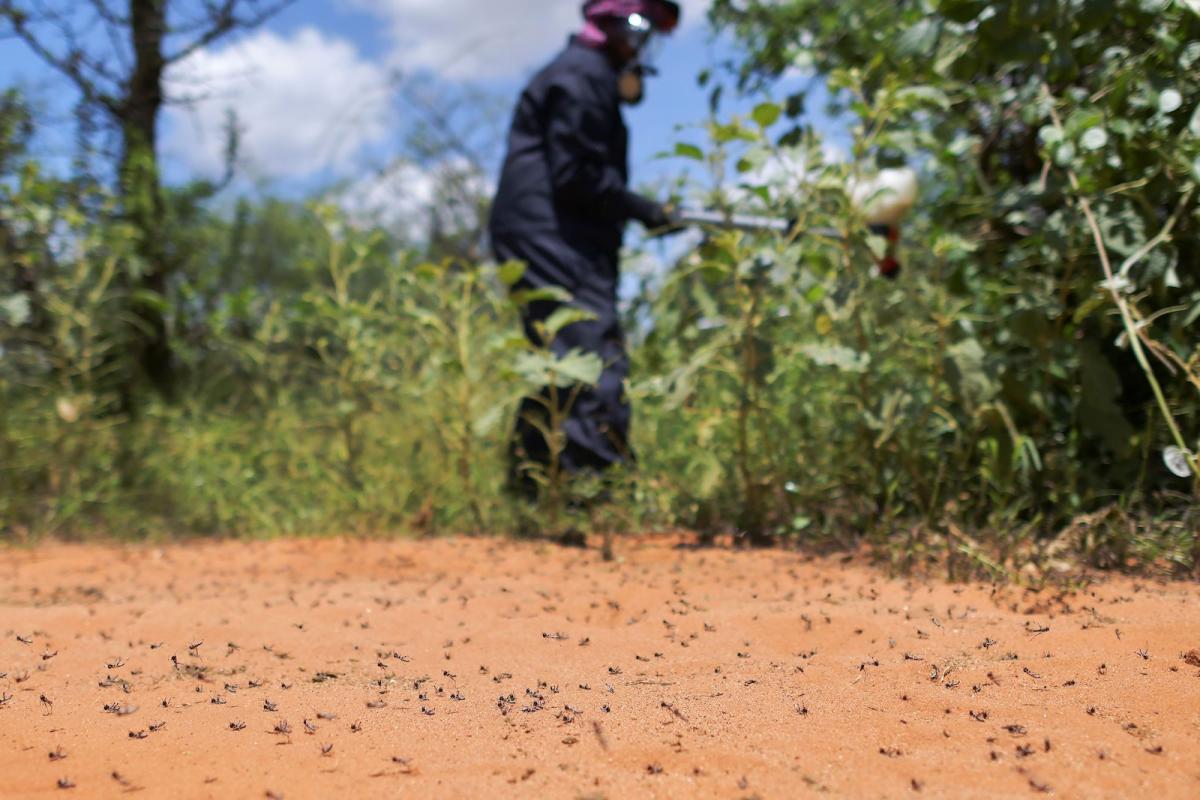The swarms were so thick they obscured the sun. Mohammed Adan, a farmer in northeastern Kenya, watched the horde of desert locusts first descend in late 2019. He’s been grappling with their legacy ever since.
Adan and 61 other farmers grow tomatoes, mangoes, watermelon, and other crops on Taleh Farm, a 309-acre property outside Garissa, a remote town not far from the Somali border. When the locusts first touched down, Garissa’s villagers resorted to traditional mitigation methods like drumming and banging pots and pans together — anything to make loud noise that might disperse the swarm. Women and children shouted at the descending crush, but their endeavors were largely fruitless.
Billions of ravenous, short-horned grasshoppers alighted, devouring every bit of living plant matter in their path. Between February and June 2020, Taleh Farm was eaten to the ground. Adan’s son, Abubakar Mohamed, who goes by Abu, estimated that the locusts caused $2,000 worth of damage that season — a devastating sum in an area where the average annual salary is belo... Read more

